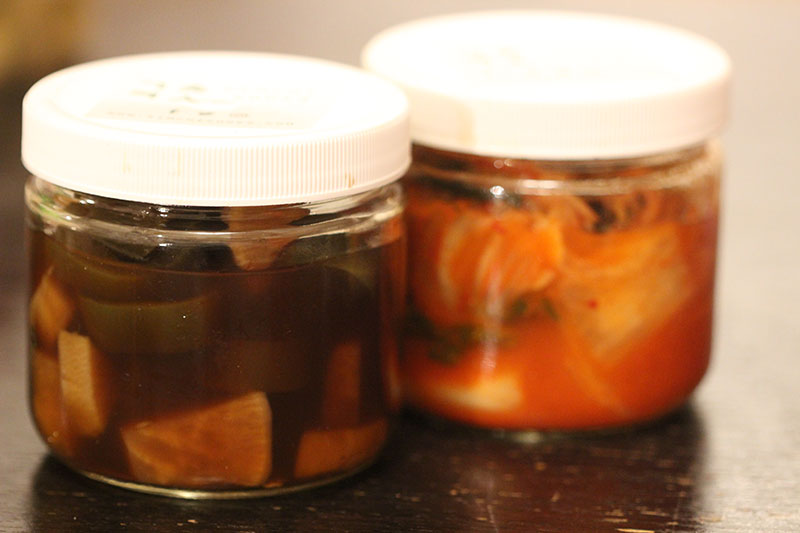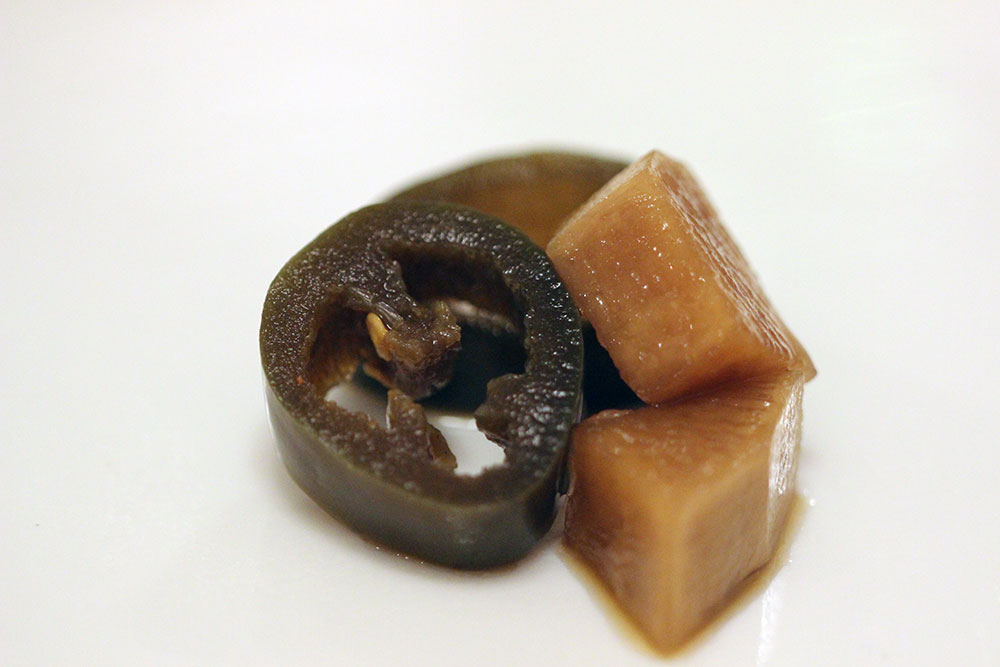Korean-Style Kimchi From The Farmer’s Market
By Ian MacAllen on Friday, June 17th, 2022 at 4:33 pm

The farmers market in McGolrick Park had a new vendor: Kimchi Kooks. The shop offered more than the usual cabbage kimchi, so I obviously had to sample some.
Kimchi Kooks is a Bay Ridge-based kimchi maker offered various types of fermented and pickled Kimchi.
The most common kimchi in America is made with Napa cabbage and flavored with garlic, onion and pepper flakes, but literally hundreds of different varieties exist in Korea — the term refers to side dishes of vegetables that are fermented, salted, or pickled.
Kimchi is at least a two thousand-year-old tradition, although early versions were made without chile peppers – a crop from the Americas that were introduced to Korea by way of Portuguese traders in the 18th century.
Japan also makes a form of cabbage-based Kimchi, although this is less likely to be fermented in traditional Korean styles, and back in the 1990s there the ongoing feud made it to the New York Times. Japan, once having invaded and colonized Korea, was now stealing a national dish.
Kimchi has grown in popularity in the United States in the last two decades or so, as interest in Korean restaurants has also gained popularity. Although not exactly available in every food court in America, Korean-focuses restaurants have gained significant attention in New York. My own neighborhood has two, one with more traditional Korean-American dishes, and another that is fusing southern (American) barbecue with Korean flavors.
The growing desire for fermented foods probably has also helped raise the profile of kimchi. Whether its Kombucha tea or René Redzepi’s The Noma Guide to Fermentation, letting food spoil slightly has never been more exciting. There’s good arguments too that fermented food is good for the gut biome.
I’ll be the first to admit that the fermented cabbage was something I was reluctant to eat when I was younger, but in the last decade I’ve come to appreciate kimchi. It’s now one of my favorite sides for tacos, sushi, or fried chicken cutlets. Seriously, it goes with a lot more things than you might think.
Meanwhile, during the pandemic, the new luxury apartment building around the corner leased the retail space to a gourmet grocery store. Like all Brooklyn gourmet grocery stores, nothing in the shop is cheap, but it does offer wide selection of Korean foods, including many different brands of kimchi. I’ve been eating my way through the various brands. None of them were as good as Kimchi Kooks.

Obviously I wanted to give the cabbage Kimchi Kooks a try to see how it compared to various jars already in my refrigerator. It was one of the best, and we finished off that jar long before some of the other commercial brands.
The pieces of cabbage had nice greens on them — something the commercial grade kimchi often doesn’t have. The greens also had a texture variation from the crispier part of the cabbage.

But we also picked up a Jalapeño and Daikon pickled kimchi. The spice of the Jalapeño and peppery flavor of the daikon were both a bit muted by the brine. The brine probably also had soy sauce as a base, along with vinegar. Even sitting in the brine though the pepper and radish were crispy.
These were great on their own but also topped on tacos and rice dishes.
If we bring back our empty jars, we’re promised a discount. We’re definitely planning on getting some more the next time we’re at the market.